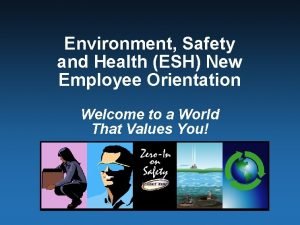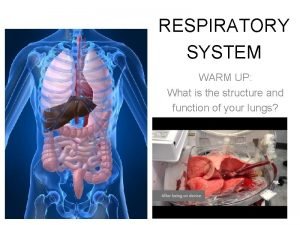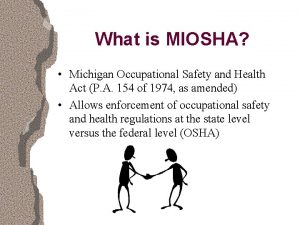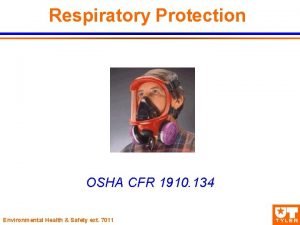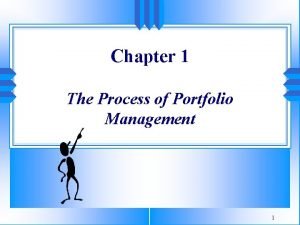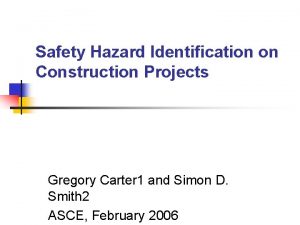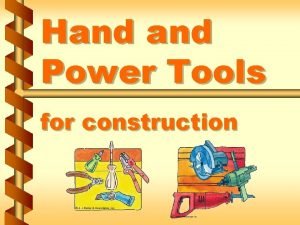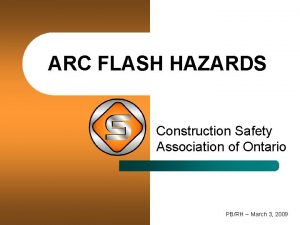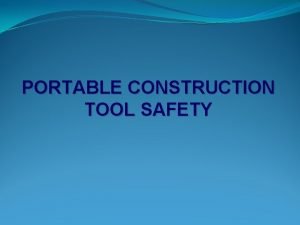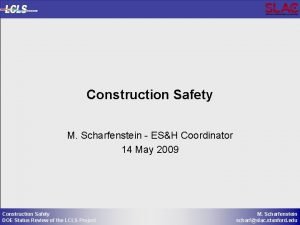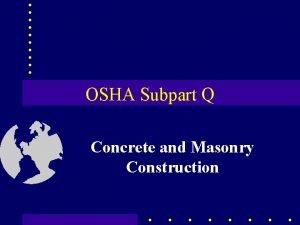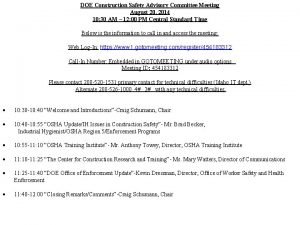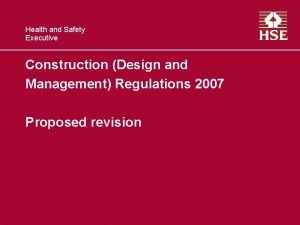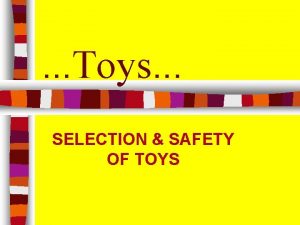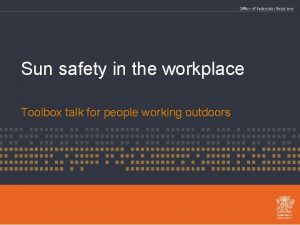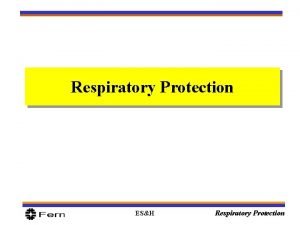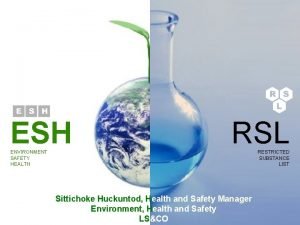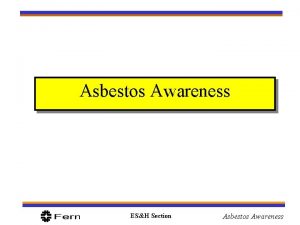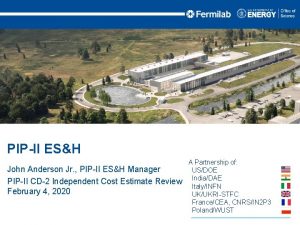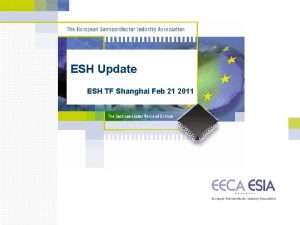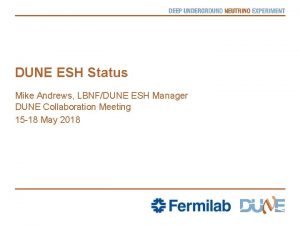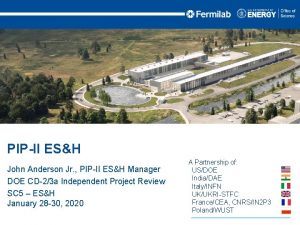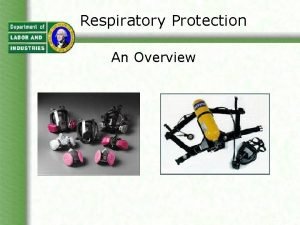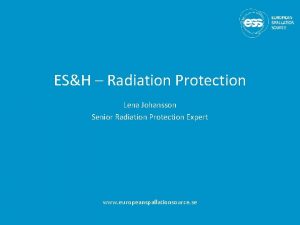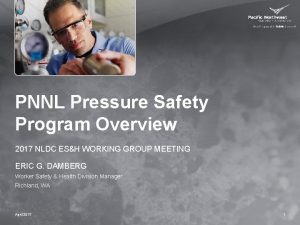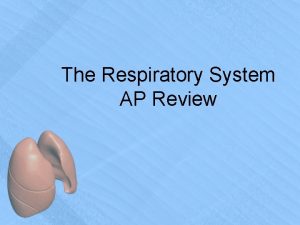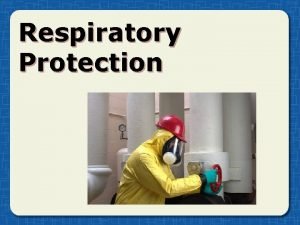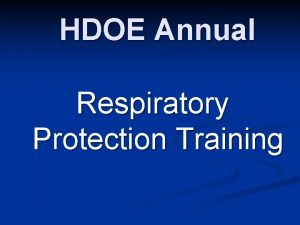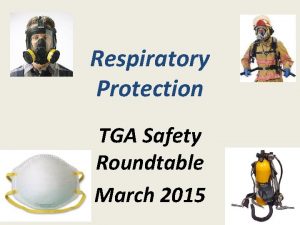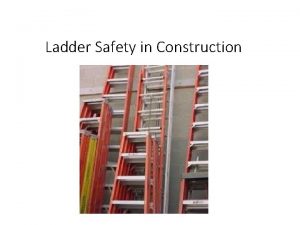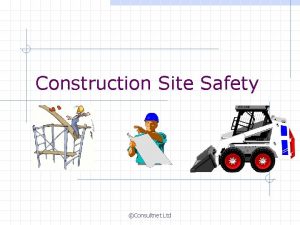Respiratory Protection ESH Construction Safety Respiratory Protection Overview



























- Slides: 27

Respiratory Protection ES&H- Construction Safety Respiratory Protection

Overview • • • Learning Objectives Hazard Communication Review Respiratory Protection Practice Elements of Respirator Protection Program Responsibilities Help/Assistance ES&H- Construction Safety Respiratory Protection

Learning Objectives • Hazard Identification • Learn various methods of preventing exposure to the hazards • Learn respirator types and cartridge types • Discuss the importance of the assigned protection factors • Maintenance (Storage, Cleaning and Inspection) • The three requirements before donning a respirator ES&H- Construction Safety Respiratory Protection

Hazard Communication Review • • • Inventory Written Program Labels Material Safety Data Sheets Training ES&H- Construction Safety Respiratory Protection

ROUTES OF ENTRY • • LUNGS (INHALATION) MOUTH (INGESTION) SKIN (ABSORPTION, INJECTION) EYES ES&H- Construction Safety Respiratory Protection

Air Contaminants • Aerosols - Dust Fume Mist • Gaseous Phase - ES&H- Construction Safety Gas Vapor Respiratory Protection

DUST • Tiny particles produced by the mechanical breakdown of a solid - i. e. crushing grinding sanding ES&H- Construction Safety Respiratory Protection

MIST • Fine droplets of liquid in the air. - i. e. Fog Liquids Sprayed into Air ES&H- Construction Safety Respiratory Protection

FUME • …is a solid that has been raised to temperature where it becomes a vapor and then condenses as it cools ES&H- Construction Safety Respiratory Protection

Particle Diameters ES&H- Construction Safety Respiratory Protection

Gases and Vapors ES&H- Construction Safety Respiratory Protection

Respiratory Protection Practice • Use only when Engineering Controls - Not Feasible Being Instituted ES&H- Construction Safety Respiratory Protection

Respiratory Protection Program • • Program administration Worksite-specific procedures Respirator selection Medical evaluation Fit-testing Training Maintenance (Storage, Cleaning and Inspection) Program evaluation ES&H- Construction Safety Respiratory Protection

Respirator Selection • Selection will be based on: – respiratory hazards (gases/vapors/particulates) – workplace and user factors – NIOSH certification ES&H- Construction Safety Respiratory Protection

Respirator Cartridges Atmospheric Contaminants • Organic Vapor • Acid Gases • Ammonia Gas • Acid Gases/Organic Vapors • HEPA • Organic Vapors/HEPA ES&H- Construction Safety Colors Assigned Black White Green Yellow Purple & Black Respiratory Protection

Respirator Types • Air Purifying Respirator (APR) – Filtering Facepiece (dust mask) – Half-Mask – Full-Face – Powered Air Purifying Respirator (PAPR) • Supplied Air Respirator (SAR) – Self-Contained Breathing Apparatus (SCBA) – Air Line ES&H- Construction Safety Respiratory Protection

Assigned Protection Factors • The number of times above the exposure limit for which a given respirator provides protection. – Filtering Facepiece (dusk mask) – Half-Mask – Full-Face – PAPR-full facepiece – SAR-full facepiece, pressure demand – SCBA-full facepiece, pressure demand ES&H- Construction Safety 5 10 50 1, 000 10, 000 Respiratory Protection

APF Calculation Example: Lead PEL=0. 05 mg/m 3 For a half mask with HEPA filters the APF is 10, The mask may be used up to concentrations of 0. 5 mg/m 3 ES&H- Construction Safety Respiratory Protection

Filtering Facepiece Voluntarily worn filtering facepiece (dust mask) do not require the implementation of a written program. However, voluntary use of tight-fitting respirators do have medical evaluation and respirator care requirements. ES&H- Construction Safety Respiratory Protection

Limitations • For Air Purifying Respirators (APR): – Cannot be used in oxygen deficient atmospheres – Cannot be used for concentrations beyond its rated protection factor – Cannot be used for unknown concentrations – Cannot be used for chemicals with poor warning properties ES&H- Construction Safety Respiratory Protection

Medical evaluation • Prior to fit-testing or respirator use. • Performed by a physician or other licensed health care professional (PLHCP). • Obtain through an initial medical examination or by using a medical questionnaire. ES&H- Construction Safety Respiratory Protection

Fit-testing • • • prior to assignment and after medical evaluation positive as well as negative, tight-fitting respirator same make, model, style and size quantitative or qualitative annual fit-testing requirement noted change in employee physical conditions ES&H- Construction Safety Respiratory Protection

Training and information • Conducted in a manner that is understandable • Training prior to assignment • Training must be conducted annually; or – changes in the workplace or type of respirator – inadequacies in the employee’s knowledge are noted – any other situation arises in which retraining appears necessary to ensure safe respirator use – provide appendix D for voluntary respirator users ES&H- Construction Safety Respiratory Protection

Responsibilities • Check that contracted employees received medical clearance to wear respiratory protection. • Check that contracted employees received respirator fit-testing with the identical respirator they intend to use. • Check that each employee using respiratory protection has been trained. ES&H- Construction Safety Respiratory Protection

Help/Assistance • • Contract Hazard Analysis Form ES&H Group ES&H Section WEB Page: www. esh. fnal. gov – FESHM Chapters 5103 & 5064 • ES&H Section ES&H- Construction Safety Respiratory Protection

Respirator Concern Contact Numbers • Accelerator Division – Richard Rebstock (3499) • ESH Section – Dave Baird (3945) • Particle Physics Division – Rob Bushek (2399) • FES Section & WDR Section – Mike Bonkalski (8448) • Technical Division – Richard Ruthe (5424) • Business Services Section – Greg Mitchell (8002) • Computing Division – Amy Pavnica (8493) ES&H- Construction Safety Respiratory Protection

Summary • The importance of Hazard Communication with respect to Selection of Respirator Protection • When Respirator Protection is necessary • Elements of Respirator Protection Program • Discussed Roles and Responsibilities • Where to turn for help and assistance ES&H- Construction Safety Respiratory Protection
 Esh environmental safety health
Esh environmental safety health Basic safety construction site safety orientation
Basic safety construction site safety orientation 00101-15 basic safety
00101-15 basic safety 3 lobes lung
3 lobes lung Exchange online protection overview
Exchange online protection overview Conducting zone and respiratory zone
Conducting zone and respiratory zone Miosha respiratory protection standard
Miosha respiratory protection standard Osha 1910-134
Osha 1910-134 Portfolio construction management and protection
Portfolio construction management and protection Gregory carter
Gregory carter Construction tool safety
Construction tool safety Arc flash training requirements ontario
Arc flash training requirements ontario Construction tool safety
Construction tool safety Construction safety system
Construction safety system The limited access zone of a masonry wall must be
The limited access zone of a masonry wall must be Construction safety
Construction safety Health and safety executive construction
Health and safety executive construction Child protection and toy safety act
Child protection and toy safety act Sun exposure safety talk
Sun exposure safety talk What is catzoc
What is catzoc Safety care behavioral safety training
Safety care behavioral safety training Process safety vs personal safety
Process safety vs personal safety Safety assessment for ind safety reporting
Safety assessment for ind safety reporting Www stands for world wide web
Www stands for world wide web Maximo overview
Maximo overview Universal modelling language
Universal modelling language Uml overview
Uml overview Vertical retail
Vertical retail
